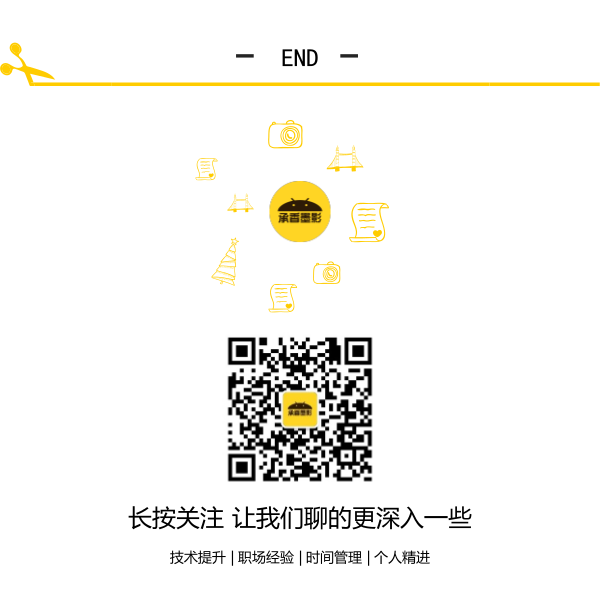Android--UI之TextView
前言
开门见山,这一篇博客主要讲一下在Android开发中,UI控件TextView的一些使用方式,并且通过四个例子实现一般项目中需要的效果来讲解TextView的使用。并且在之后的一段时间之内,都会讲解关于AndroidUI控件的开发。
TextView
之前讲解Android布局的时候,就已经说明,所有Layout都是View的子类或者间接子类。而TextView也一样,是View的直接子类。它是一个文本显示控件,提供了基本的显示文本的功能,并且是大部分UI控件的父类,因为大部分UI控件都需要展示信息。
如果仅仅是展示文本,那么TextView的作用就太小了,所以它还预定义了一些类似于HTML的标签,通过这些标签可以使TextView控件显示不同的颜色、大小、字体、图片、链接。这些HTML标签都需要android.text.Html类的支持,但是并不包括所有的HTML标签。
常用的可以再TextView中设定的标签有:
- <font>:设置颜色和字体。
- <big>:设置字体大号
- <small>:设置字体小号
- <i>\<b>:斜体\粗体
- <a>:连接网址
- <img>:图片
使用这些标签可以用Html.fromHtml方法将这些标签的字符串转换成CharSequence接口,然后在TextView.setText()中进行设置。如果需要响应设置的HTML标签进行响应,需要设置TextView.setMovementMethod(LinkMovementMethod.getInstance())。
CharSequence为接口类型,大家可能对其有点陌生,但是它的子类肯定会让大家有熟悉的感觉,String、StringBuffer、StringBuilder、SpannableString、SpannableStringBuilder都是其子类,它包括了字符串的所有类,因为面向对象的多态性,在这里把他理解成字符串类的抽象即可。
除了使用HTML标签的方式设定显示文本中的URL地址、邮箱地址、电话等产生超链接出发相应的服务,可以使用android:autoLink属性来设置,以下是android:autoLink属性的介绍:
- None:默认的,不匹配任何连接。
- web:网址。
- email:邮箱。
- phone:电话号码。
- map:匹配映射网址。
- all:匹配所有连接。
显示富文本
讲了这么多,通过第一个例子来讲解一下TextView使用HTML标签设定样式和通过autoLink属性来设置超链接效果,在XML布局文件中定义两个TextView,分别展示HTML标签和autoLink属性的使用。
XML布局文件textviewdemo.xml代码:
1 <?xml version="1.0" encoding="utf-8"?> 2 <LinearLayout xmlns:android="http://schemas.android.com/apk/res/android" 3 android:layout_width="match_parent" 4 android:layout_height="match_parent" 5 android:orientation="vertical" > 6 <TextView 7 android:id="@+id/textView1" 8 android:layout_width="fill_parent" 9 android:layout_height="wrap_content" 10 android:padding="20sp" 11 /> 12 <TextView 13 android:id="@+id/textView2" 14 android:layout_width="fill_parent" 15 android:layout_height="wrap_content" 16 android:padding="20sp" 17 android:autoLink="all" 18 android:textSize="20sp" 19 /> 20 </LinearLayout>
Activity文件textViewDemoActivity.java代码:
1 package cn.bgxt.textviewdemo; 2 3 import android.app.Activity; 4 import android.os.Bundle; 5 import android.text.Html; 6 import android.text.method.LinkMovementMethod; 7 import android.widget.TextView; 8 9 public class textViewDemoActivity extends Activity { 10 11 private TextView textView1,textView2; 12 public textViewDemoActivity() { 13 // TODO Auto-generated constructor stub 14 } 15 @Override 16 protected void onCreate(Bundle savedInstanceState) { 17 // TODO Auto-generated method stub 18 super.onCreate(savedInstanceState); 19 setContentView(R.layout.textviewdemo); 20 //通过Id获得两个TextView控件 21 textView1=(TextView)findViewById(R.id.textView1); 22 textView2=(TextView)findViewById(R.id.textView2); 23 24 //设置需要显示的字符串 25 String html="<font color ='red'>Hello android</font><br/>"; 26 html+="<font color='#0000ff'><big><i>Hello android</i></big></font><p>"; 27 html+="<big><a href='http://www.baidu.com'>百度</a></big>"; 28 //使用Html.fromHtml,把含HTML标签的字符串转换成可显示的文本样式 29 CharSequence charSequence=Html.fromHtml(html); 30 //通过setText给TextView赋值 31 textView1.setText(charSequence); 32 //设定一个点击的响应 33 textView1.setMovementMethod(LinkMovementMethod.getInstance()); 34 35 String text="我的URL:http://www.cnblogs.com/plokmju/\n"; 36 text+="我的email:plokmju@sina.com\n"; 37 text+="我的电话:+86 010-12345678"; 38 //因为textView2中有autoLink=”all“的属性设定,所以会自动识别对应的连接,点击出发对应的Android程序 39 textView2.setText(text); 40 } 41 42 }
显示效果:
TextView显示图片
第二个例子讲解一下在TextView中显示图片的例子,依然是使用HTML标签的方式定义样式,但是使用的是Html.fromHtml()的另外一个重载的静态方法,可以设定<img>标签中的图像资源。
static Spanned fromHtml(String source,Html.ImageGetter imageGetter,Html.TagHandler tagHandler)
对于这个方法,在imageGetter参数中设定<img>标签中的图像资源文件,tagHandler主要是为了处理Html类无法识别的html标签的情况,一般不会用上,传值为null即可。
布局XML文件textvideforimg.xml代码:
1 <?xml version="1.0" encoding="utf-8"?> 2 <LinearLayout xmlns:android="http://schemas.android.com/apk/res/android" 3 android:layout_width="match_parent" 4 android:layout_height="match_parent" 5 android:orientation="vertical" > 6 <TextView 7 android:id="@+id/textImg" 8 android:layout_width="fill_parent" 9 android:layout_height="match_parent" 10 android:layout_margin="10dp" /> 11 </LinearLayout>
Activity文件textviewForImgActivity.java代码:
1 package cn.bgxt.textviewdemo; 2 3 import java.lang.reflect.Field; 4 5 import android.R.color; 6 import android.app.Activity; 7 import android.graphics.drawable.Drawable; 8 import android.os.Bundle; 9 import android.text.Html; 10 import android.text.Html.ImageGetter; 11 import android.text.method.LinkMovementMethod; 12 import android.widget.TextView; 13 14 public class textviewForImgActivity extends Activity { 15 16 private TextView textViewImg; 17 public textviewForImgActivity() { 18 // TODO Auto-generated constructor stub 19 } 20 21 @Override 22 protected void onCreate(Bundle savedInstanceState) { 23 // TODO Auto-generated method stub 24 super.onCreate(savedInstanceState); 25 setContentView(R.layout.textvideforimg); 26 27 textViewImg=(TextView)findViewById(R.id.textImg); 28 textViewImg.setTextColor(color.white); 29 textViewImg.setBackgroundColor(color.black); 30 textViewImg.setTextSize(20); 31 //设定HTML标签样式,图片3为一个超链接标签a 32 String html="图像1<img src='image1'/>图像2<img src='image2'/>\n"; 33 html+="图像3<a href='http://www,baidu.com'><img src='image3'/></a>"; 34 //fromHtml中ImageGetter选择html中<img>的图片资源 35 CharSequence cs=Html.fromHtml(html, new ImageGetter() { 36 37 public Drawable getDrawable(String source) { 38 //source为html字符串中定义的<img>中的src的内容 39 //返回值Drawable就是对应的<img>显示的图片资源 40 Drawable draw=null; 41 if(source.equals("image1")) 42 { 43 draw=getResources().getDrawable(R.drawable.image1); 44 draw.setBounds(0, 0, draw.getIntrinsicWidth(), draw.getIntrinsicHeight()); 45 } 46 else if(source.equals("image2")) 47 { 48 //设定image2尺寸等比缩小 49 draw=getResources().getDrawable(R.drawable.image2); 50 draw.setBounds(0, 0, draw.getIntrinsicWidth()/2, draw.getIntrinsicHeight()/2); 51 } 52 else 53 { 54 //使用反射会更简便,无需知道src与资源Id的对应关系 55 draw=getResources().getDrawable(getResourceId(source)); 56 draw.setBounds(0, 0, draw.getIntrinsicWidth(), draw.getIntrinsicHeight()); 57 } 58 return draw; 59 } 60 }, null); 61 textViewImg.setText(cs); 62 textViewImg.setMovementMethod(LinkMovementMethod.getInstance()); 63 } 64 65 public int getResourceId(String source) 66 { 67 try { 68 //使用反射机制,通过属性名称,得到其内的值 69 Field field=R.drawable.class.getField(source); 70 return Integer.parseInt(field.get(null).toString()); 71 } catch (Exception e) { 72 // TODO: handle exception 73 } 74 return 0; 75 } 76 77 }
效果截图,其中第三个图片点击会触发浏览器访问百度网址:
在TextView增加Click事件
第三个例子在TextView添加点击事件,导航到其他的Activity中。使用SpannableString.setSpan()设定那一段文本需要相应点击事件。与之类似的还有SpannableBuilder对象,他们的关系和String与StringBuilder一样。
void setSpan(Object what,int start,int end,int flags)
在what参数中传递一个抽象类ClickableSpan,需要实现其onClick()方法,此为指定文本的点击相应时间。start和end分别指定需要响应onClick()方法的文本开始与结束。flags设定一个标识,确定使用什么方式选择文本块,一般使用Spanned接口下的SPAN_EXCLUSIVE_EXCLUSIVE对其进行赋值,表示遵循设定的开始于结束位置的文本块。
布局文件activityclick.xml的代码:
1 <?xml version="1.0" encoding="utf-8"?> 2 <LinearLayout xmlns:android="http://schemas.android.com/apk/res/android" 3 android:layout_width="match_parent" 4 android:layout_height="match_parent" 5 android:orientation="vertical" > 6 <TextView 7 android:id="@+id/clickTextView1" 8 android:textSize="30dp" 9 android:layout_marginTop="30dp" 10 android:layout_width="match_parent" 11 android:layout_height="wrap_content" /> 12 <TextView 13 android:textSize="30dp" 14 android:layout_marginTop="30dp" 15 android:id="@+id/clickTextView2" 16 android:layout_width="match_parent" 17 android:layout_height="wrap_content" /> 18 </LinearLayout>
Activity文件TextViewOnClickActivity.java的代码:
1 package cn.bgxt.textviewdemo; 2 3 import android.app.Activity; 4 import android.content.Intent; 5 import android.os.Bundle; 6 import android.text.SpannableString; 7 import android.text.Spanned; 8 import android.text.method.LinkMovementMethod; 9 import android.text.style.ClickableSpan; 10 import android.view.View; 11 import android.widget.TextView; 12 13 public class TextViewOnClickActivity extends Activity { 14 15 private TextView clickTextView1,clickTextView2; 16 17 public TextViewOnClickActivity() { 18 } 19 20 @Override 21 protected void onCreate(Bundle savedInstanceState) { 22 super.onCreate(savedInstanceState); 23 setContentView(R.layout.activityclick); 24 25 clickTextView1=(TextView)this.findViewById(R.id.clickTextView1); 26 clickTextView2=(TextView)this.findViewById(R.id.clickTextView2); 27 String text1="显示Activity1"; 28 String text2="显示Activity2"; 29 //使用SpannableString存放字符串 30 SpannableString spannableString=new SpannableString(text1); 31 SpannableString spannableString2=new SpannableString(text2); 32 //通过setSpan设定文本块响应的点击事件 33 //此处只设定文本的索引为2开始的文本块:Activity1 34 spannableString.setSpan(new ClickableSpan() { 35 @Override 36 public void onClick(View widget) { 37 //导航到一个新的 Activity1中 38 Intent intent=new Intent(TextViewOnClickActivity.this,Activity1.class); 39 startActivity(intent); 40 } 41 }, 2, text1.length(), Spanned.SPAN_EXCLUSIVE_EXCLUSIVE); 42 43 spannableString2.setSpan(new ClickableSpan() { 44 45 @Override 46 public void onClick(View widget) { 47 // TODO Auto-generated method stub 48 Intent intent=new Intent(TextViewOnClickActivity.this,Activity2.class); 49 startActivity(intent); 50 } 51 }, 2, text1.length(), Spanned.SPAN_EXCLUSIVE_EXCLUSIVE); 52 53 //对TextView文本进行赋值 54 clickTextView1.setText(spannableString); 55 //设置点击响应 56 clickTextView1.setMovementMethod(LinkMovementMethod.getInstance()); 57 clickTextView2.setText(spannableString2); 58 clickTextView2.setMovementMethod(LinkMovementMethod.getInstance()); 59 60 61 62 } 63 }
效果图,从图中可以看出只有点击setSpan中设定的代码块才可以触发点击事件:
跑马灯效果
说到文本显示,最常见的效果就是跑马灯效果,这里以一个例子展示跑马灯的效果,基本无需使用Java代码,在布局文件中设定各项属性就已经可以实现这个效果了。
在看代码前,先讲解一下等下会碰到的属性:
- android:elipsize: 如果文本长度大于TextView的显示长度,则隐藏那一部分,可赋值为:none(不隐藏)、start(隐藏开始)、middle(隐藏中间)、end(隐藏结束)、marquee(滚动效果)。
- android:marqueRepeatLimit:设定需要重复动画的次数,传递一个int值,-1为无限循环。
- android:focusable:是否允许获得焦点,传递一个bool值。
- android:focusableInTouchMode:是否在获得焦点时对控件有联系,传递一个bool值。
介绍属性后,直接看代码吧,XML布局文件runlamp_layout.xml代码:
1 <?xml version="1.0" encoding="utf-8"?> 2 <LinearLayout xmlns:android="http://schemas.android.com/apk/res/android" 3 android:layout_width="match_parent" 4 android:layout_height="match_parent" 5 android:orientation="vertical" > 6 7 <TextView 8 android:id="@+id/tvRunLamp" android:layout_width="fill_parent" 9 android:layout_height="wrap_content" 10 android:singleLine="true" 11 android:ellipsize="marquee" 12 android:marqueeRepeatLimit="marquee_forever" 13 android:focusable="true" 14 android:focusableInTouchMode="true" 15 android:background="#FFF" 16 android:textColor="#000" 17 android:textSize="20dp" 18 android:layout_margin="10dp" 19 android:padding="10dp"/> 20 </LinearLayout>
Activity文件RunLampActivity.java代码:
1 package cn.bgxt.textviewdemo; 2 3 import android.app.Activity; 4 import android.os.Bundle; 5 import android.text.Html; 6 import android.text.method.LinkMovementMethod; 7 import android.widget.TextView; 8 9 public class RunLampActivity extends Activity { 10 11 private TextView tvRunLamp; 12 13 public RunLampActivity() { 14 // TODO Auto-generated constructor stub 15 } 16 17 @Override 18 protected void onCreate(Bundle savedInstanceState) { 19 // TODO Auto-generated method stub 20 super.onCreate(savedInstanceState); 21 setContentView(R.layout.runlamp_layout); 22 23 tvRunLamp = (TextView) findViewById(R.id.tvRunLamp); 24 String html = "之前讲解Android布局的时候,就已经说明,所有<a href='http://www.cnblogs.com/plokmju/p/androidUI_Layout.html'>Layout</a>都是View的子类或者间接子类。而TextView也一样,是View的直接子类。它是一个文本显示控件,提供了基本的显示文本的功能,并且是大部分UI控件的父类,因为大部分UI控件都需要展示信息。"; 25 CharSequence cs = Html.fromHtml(html); 26 tvRunLamp.setText(cs); 27 //因为文本中设定了一个<a>标签,这里设置响应。 28 tvRunLamp.setMovementMethod(LinkMovementMethod.getInstance()); 29 } 30 }
运行效果图,是一个滚动的效果:
总结
在此就说明了Android中TextView,并且以例子的方式说明了一些常用效果的实现。因为TextView是大部分UI控件的父类,所以其内的一些属性对于其他UI控件都是通用的,可以有借鉴的地方。
请支持原创,尊重原创,转载请注明出处。谢谢。






【推荐】国内首个AI IDE,深度理解中文开发场景,立即下载体验Trae
【推荐】编程新体验,更懂你的AI,立即体验豆包MarsCode编程助手
【推荐】抖音旗下AI助手豆包,你的智能百科全书,全免费不限次数
【推荐】轻量又高性能的 SSH 工具 IShell:AI 加持,快人一步
· 10年+ .NET Coder 心语,封装的思维:从隐藏、稳定开始理解其本质意义
· .NET Core 中如何实现缓存的预热?
· 从 HTTP 原因短语缺失研究 HTTP/2 和 HTTP/3 的设计差异
· AI与.NET技术实操系列:向量存储与相似性搜索在 .NET 中的实现
· 基于Microsoft.Extensions.AI核心库实现RAG应用
· 10年+ .NET Coder 心语 ── 封装的思维:从隐藏、稳定开始理解其本质意义
· 地球OL攻略 —— 某应届生求职总结
· 提示词工程——AI应用必不可少的技术
· Open-Sora 2.0 重磅开源!
· 周边上新:园子的第一款马克杯温暖上架